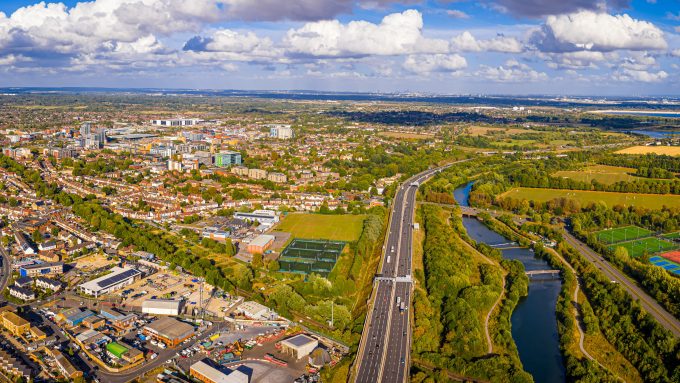
Telecoms sector dials up extreme weather response

Strong winds and heavy snow from Storm Arwen hit Britain hard three years ago, presenting a wake-up call for infrastructure owners including telecom companies as to the resilience of their networks in the face of extreme weather.
Industry representatives from BT Group, UK Power Networks and Anglian Water have already come together to work on a demonstrator for better co-ordinated action plans, through the early work of the Climate Resilience Demonstrator led by Connected Places Catapult.
The next stage is to help move the Demonstrator on from being a means to show the power of using data sharing to improve resilience, to become the Climate Resilience Decision Optimiser (CReDO) digital twin platform and decision-making tool. In order to explore that ambition, a telecoms working group has been convened.
The idea is to set out a shared understanding of the potential to use data, technology and regulatory insights to improve the resilience of communication networks during periods of extreme weather.
At a workshop in London in January, stakeholders from CReDO’s key partner organisations – which includes telecoms, energy and water sector representatives – took part in a panel discussion to identify the scope for further collaboration, and the next steps for the programme.

“Arwen was a massive storm that took out power supplies through wind, and then restoration was affected by snow,” said BT Group’s service specialist Justine Webster. “A number of cell sites lost power and, at the time, there was limited industry resilience through battery back-up.
“In addition, it was difficult to predict which sites would be without power the longest to enable generators to be deployed to the most at-need locations.
“Since the storm, individual sectors have made improvements themselves,” she added, “but they still work in silos without much cross-sector understanding.”
Justine explained that mobile telephone cell sites are designed to cope with short duration power outages, and that over-lapping coverage from other sites provides added resilience. In addition, if one network goes down, customers can make use of any other operator’s network to dial 999. But extended periods of power loss can prove more of a problem, especially if all operators lose power.
“Imagine a world with CReDO where we have a single source of power and critical national infrastructure mapping, and where you can see which assets are most likely to be affected by extreme weather. By having all assets included, we will know what can be achieved, for instance, by correctly placing a generator to maintain essential coverage across multiple mobile networks.”Justine Webster, BT Group’s service specialist
“Funding is needed to develop CReDO and it has to include telecoms, otherwise it won’t achieve what it could and should,” Justine continued. “I want to see CReDO come to life, and for it to make the massive societal impact it has the potential to achieve.”
Opinions from a water representative
Anglian Water’s asset systems specialist Tom Burgoyne told the event that the water sector has a real appetite for a better cross sector emergency response in the face of extreme weather, and in using collaborative platforms like CReDO to achieve it.
He also pointed out that if more water is demanded by customers in a heatwave, or is needed by industry to protect assets through evaporative cooling, “it could mean that the loss of water supply causes a cascade failure across other sectors.”
He said enabling data interoperability, and the creation of a ‘systems of systems’ model of all UK infrastructure, should “be very appealing for infrastructure operators” and would encourage them to get involved. “The existing climate resilience use case makes CReDO a compelling collaborative project, but in addition to that it provides the foundation to unlock other applications.”
But he also warned that while many in the sector will agree with the principles of sharing data around infrastructure assets for the benefit of all, “there is also scepticism as to whether barriers can be overcome.”

Other speakers offer their thoughts
Delegates also heard from Connected Places Catapult’s chief executive Erika Lewis who said the more that can be done to use technology in a way that works for critical national infrastructure, the better it will be for the country.
Connected Places Catapult’s CReDO lead Elliot Christou said that the ambition of recent work around CReDO was to understand more about the interdependencies of different infrastructure sectors in response to severe weather.
“CReDO can provide a co-ordinated picture, and help us understand the need for better data sharing to make more efficient investments,” he said. “Part of the current thinking around telecoms is a focus on how we can start to think not just about planning for an event, but the level of response as well.”
National Infrastructure Commission’s director of policy Margaret Read welcomed the attempt to combine efforts to improve resilience in local areas.
“Individual sector resilience is not enough; we need to consider whole system resilience and that requires telecoms, energy and water working together,” she said. “CReDO highlights that greater data sharing can provide a more resilient network.”Margaret Read, National Infrastructure Commission’s director of policy
Read about a £10 million contract to develop CReDO for energy resilience. Find out more about the work of CReDO.





